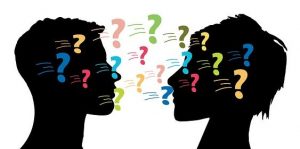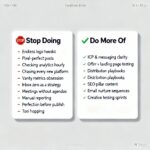Table of Contents
 Learn communication skills was the focus of a network marketing Leadership Training Class recently.
Learn communication skills was the focus of a network marketing Leadership Training Class recently.
Whether you are into network marketing or not, I learned good lessons that spill over into my online and offline business life.
Who Needs Communications Skills?
Well – everyone who interacts with other people! So this article isn’t just for business people.
But a vital part of any business, online or offline, is communication – and when you are looking to grow a business your communication skills can have a positive or negative effect on your prospect.
However even if you think this is a currently a weakness for you, don’t worry, because you can learn communication skills.
Practice – and be OK with failing. Remember, the nature of building a network marketing team is that you only need to find a small number of good people, and teach them to do the same.
How To Learn Communication Skills
Here is one system that will help you learn how to communicate more effectively.
This training is based on Marc Accetta’s system. After reading my summary, I encourage you to take the personality test yourself on his site.
That’s important self-knowledge but you can’t send every prospect to take a personality test before you talk to them! So here’s what we learned to help us talk to people in the communication style they prefer.
There are four basic personality types, classified by color, with high functioning and dysfunctional traits. You will learn below how to identify them and how to persuade / inspire them.
Yellows
 Identify “yellows” by their happy, warm and soft-spoken tone of voice. They will greet you with a big smile, warm handshake and eye contact. Maybe a hug. They don’t yell or make sarcastic comments but love to talk. They are family and animal lovers
Identify “yellows” by their happy, warm and soft-spoken tone of voice. They will greet you with a big smile, warm handshake and eye contact. Maybe a hug. They don’t yell or make sarcastic comments but love to talk. They are family and animal lovers
Yellows will usually adopt a casual and comfortable dress style, maybe sporting long unstyled hair. They are NOT “flashy and bright”, preferring earthy tones. They are friendly and loyal team-players who will only follow ethical leaders.
Dysfunctional Yellows are sensitive to criticism and rejection. They may shut-down if you yell at them, or reach the point of outburst if you push them too far.
Getting the best out of Yellows: They are supporters rather than leaders – BUT can be grown into leaders. Treat them with sincerity and honesty, be patient with them and raise them up. Yellows are not boastful or competitive, so don’t challenge them; appeal to their team-spirit. You will inspire them with recognition and be proud to have them on your team.
Blues
 Identify blues by their trendy appearance and brightly colored clothing. These are fun, informal, happy, free spirits, artistic, good sense of humor, spontaneous – living for now, not tomorrow. They like strong leaders who treat them well. Because they are good with people they may be prolific recruiters. When they greet you they will have a big smile and expect to get close to you. They will tend to ask “Who?” questions.
Identify blues by their trendy appearance and brightly colored clothing. These are fun, informal, happy, free spirits, artistic, good sense of humor, spontaneous – living for now, not tomorrow. They like strong leaders who treat them well. Because they are good with people they may be prolific recruiters. When they greet you they will have a big smile and expect to get close to you. They will tend to ask “Who?” questions.
Dysfunctional Blues are forgetful, poor time-keepers, unreliable and prone to making decisions without thinking things through.
Getting the best out of Blues: Follow-up isn’t a strong point, so if they DO recruit 10 or 20 people one month, keep them on track with follow-up training. Don’t give them bad news or go into details – focus on small chunks of information at a time in an even tone of voice. Publicly recognise their success.
Greens
 Identify Greens by their lack of concern about their appearance, which is probably formal and conservative, unlikely to be flashy. Although very articulate, their delivery may be almost monotone and they’re unlikely to use slang. They are the “engineers” of this world, analytical, like data, formal, perfectionists, detached, logical and calculated. They are very prompt and don’t like surprises.
Identify Greens by their lack of concern about their appearance, which is probably formal and conservative, unlikely to be flashy. Although very articulate, their delivery may be almost monotone and they’re unlikely to use slang. They are the “engineers” of this world, analytical, like data, formal, perfectionists, detached, logical and calculated. They are very prompt and don’t like surprises.
You will need to know your facts to answer all their “How?” questions, and they won’t make snap decisions. Don’t take offense if they appear skeptical. They need their space, so be careful of hugging too early in the relationship.
Dysfunctional Greens are unforgiving, hard to get close to and prone to arguing – maybe let them win 🙂 They can over-analyse so much that they never get off the ground.
Getting the best out of Greens: they need a plan to follow. Explain their options then back off – don’t try to rush them; let their logic take over. Show them success and once they fully understand the business they will get started and build.
Reds
 Identify Reds by their confidence, drive and stylish / expensive appearance. Even when casual, they will appear well-groomed. Their rapid speech may be loud and forceful: “Listen to me”, because they enjoy the spotlight. They will probably just “go for it”, making fast decisions and asking questions later. Reds like to be in control and to be with winners, but may be insecure deep down and needing to over-achieve for approval. Being hard workers, reds thrive on challenges and big goals.
Identify Reds by their confidence, drive and stylish / expensive appearance. Even when casual, they will appear well-groomed. Their rapid speech may be loud and forceful: “Listen to me”, because they enjoy the spotlight. They will probably just “go for it”, making fast decisions and asking questions later. Reds like to be in control and to be with winners, but may be insecure deep down and needing to over-achieve for approval. Being hard workers, reds thrive on challenges and big goals.
Dysfunctional Reds are aggressive and may emanate the attitude that the world revolves around them, so “Just be pleased I turned up”. They can be selfish and abrupt and aren’t good team-players. They may be boastful of how much they are earning and at worst, try using fear and intimidation to manage people.
Getting the best out of Reds: As busy people, reds expect you to be on-time, although don’t be surprised if they are late. Speak confidently to them and give them options, not opinions, but stand your ground if challenged. Be patient – if necessary pass them to someone else in your team who will understand them better. If you need to “correct them”, sandwich corrections with plenty of praise. Gain their respect and they will be an asset to your team with good leadership training.
Identifying The Colors
As already noted, you can’t send people to take the online test when you first meet them, so you’ll need to become adept at identifying them in other ways. Leadership training needs you to be able to quickly identify a person’s color. Here are some suggestions:
- You’ll learn more about them by listening to what they say
- Ask about their job – a D.J may be a blue, a computer programmer a green
- The materials available for purchase on Marc Accetta’s website provide detailed help
Why “Color Code” People?
 The aim is to learn communication skills so that you can effectively address people in their own preferred style of communication.
The aim is to learn communication skills so that you can effectively address people in their own preferred style of communication.
For instance, a bouncy “blue”, in their natural style, could “put off” a formal “green” who wants every question answered. Ideally the “blue” should tone down their exuberance and communicate in the way that a “green” will prefer, giving lots of facts and figures.
In short, Marc Accetta’s system will help you speak your prospect’s language.
When you know what your own style is, you can start to look at other people’s styles, be a chameleon, and learn to communicate in the way that best suits the person you are talking to.
Leadership training includes making sure that your team can do the same.
I took the online test, and appear to be a green, which was no surprise to me. The next highest score was Red, and the lowest score by quite a long way was Blue (agreed).
I hope you’ll enjoy taking the test, finding your results, and most importantly learn communications skills to help you in business.
Acknowledgement
Original credit for this brief summary is due to Marc Accetta’s system. Any errors or misinterpretations are mine.












